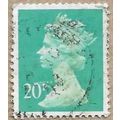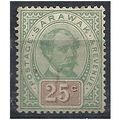Edinburgh - Princes Street Gardens, Floral Clock - postcard c.1920s
- Condition : Used
- Dispatch : 2 Days
- Brand : None
- ID# : 93649327
- Quantity : 1 item
- Views : 381
- Location : United Kingdom

- Seller : justthebook (+1703)
- Barcode : None
- Start : Sat 23 Feb 2013 21:01:22 (BST)
- Close : Run Until Sold
- Remain : Run Until Sold
More Listings from This Seller view all
Seller's Description
- Postcard
- Picture / Image: Princes Street Gardens, Edinburgh - Floral Clock
- Publisher: none given
- Postally used: no
- Stamp: n/a
- Postmark(s): n/a
- Sent to: n/a
- Notes / condition:
Please ask if you need any other information and I will do the best I can to answer.
------------------------------------------------
Postage & Packing:
UK (incl. IOM, CI & BFPO): 99p
Europe: £1.60
Rest of world (inc. USA etc): £2.75
No additional charges for more than one postcard. You can buy as many postcards from me as you like and you will just pay the fee above once. (If buying postcards with other things such as books, please contact or wait for invoice before paying).
Payment Methods:
UK - PayPal, Cheque (from UK bank) or postal order
Outside UK: PayPal ONLY (unless otherwise stated) please. NO non-UK currency checks or money orders (sorry).
NOTE: All postcards are sent in brand new stiffened envelopes which I have bought for the task. These are specially made to protect postcards and you may be able to re-use them. In addition there are other costs to sending so the above charge is not just for the stamp!
I will give a full refund if you are not fully satisfied with the postcard.
----------------------------------------------
Text from the free encyclopedia WIKIPEDIA may appear below to give a little background information (internal links may not work) :
*************
Princes Street Gardens is a public park in the centre of Edinburgh, Scotland, in the shadow of Edinburgh Castle. The Gardens were created in two phases in the 1770s and 1820s following the long draining of the Nor Loch and the creation of the New Town. The Nor Loch was a large loch on the north side of the town, making expansion northwards difficult. It was heavily polluted from centuries of sewage draining downhill from the Old Town. In 1846 the railway was built in the valley to connect the Edinburgh-Glasgow line from Haymarket with the new northern terminus of the North British line from Berwick-upon-Tweed at Waverley Station.[1]
The gardens run along the south side of Princes Street and are divided by The Mound. East Princes Street Gardens run from The Mound to Waverley Bridge, and cover 8.5 acres (34,000 m2). The larger West Princes Street Gardens cover 29 acres (120,000 m2) and extend to the adjacent churches of St. John's and St. Cuthbert's, near Lothian Road in the west.
The Gardens are the best known park in Edinburgh having the highest awareness and visitor figures for both residents and visitors to the city.[2] Various concerts and other events are held at the Ross Bandstand including the Festival Fireworks Concert and during the city's Hogmanay celebrations.
East Princes Street Gardens originated after a dispute between Edinburgh Corporation (town council) and the early New Town proprietors, among whom was the philosopher David Hume who resided in St. David Street, a side street off Princes Street. In 1771 the council acquired the land as part of the First New Town development. It began feuing ground on the south side of Princes Street (on the site of the current Balmoral Hotel) for the building of houses and workshops for a coach-builder and a furniture-maker. After a failed petition to the council the proprietors raised two actions in the Court of Session to halt the building and to condemn the Corporation for having contravened their feuing terms by which they had pre-supposed open ground and a vista south of the street. After the Court found in favour of the council on the first point the decision was quickly appealed to the House of Lords and overturned, but when the Court again supported the council on the second point, the matter was submitted to judicial arbitration. This resulted in a judgement that the houses could be completed (on the site of the later North British Hotel), that the adjacent furniture-maker's premises must not rise above the level of Princes Street (which is the reason the Princes Mall Shopping Centre is at street level) and that the ground westwards for half the length of Princes Street ""shall be kept and preserved in perpetuity as pleasure-grounds to be dressed up at the expense of the town council as soon as may be.""[3]
West Princes Street Gardens were originally the private property of ""the Princes Street Proprietors"" who overlooked them from their houses on the western half of the street. This was passed to them from the council in 1816[4]. Dogs, cricket, perambulators and smoking were prohibited under their rules, and people using bath-chairs had to present a doctor's certificate to the Committee of the garden attesting to their ailment not being contagious. An application by the Scottish Association for Suppressing Drunkenness that the gardens be opened during Christmas and New Year ""with the object of keeping parties out of the dram shops (i.e. illegal drinking premises)"" led eventually to them being opened to the general public on Christmas Day, New Year's Day and one other day in the year.
In 1876, despite much opposition from residents, the town council reacquired the ground for use as a public park. The new park was laid out by the City Architect Robert Morham including the building of a very picturesque gardeners cottage at the east end of the West Gardens. As part of a later agreement (c.1880) the council widened Princes Street (resulting in a far steeper embankment on that side). A series of statues were erected along the edge of the widened road.
The Princes Street proprietors contributed £500 as a goodwill gesture to the cost of a bandstand.[5]
The Ross Bandstand is named after William Henry Ross, Chairman of the Distillers Company Ltd., who gifted the first bandstand on the site in 1877. The present building and terraces date from 1935.
type=printed postcards
theme=topographical: british
sub-theme=scotland
county/ country=midlothian/ edinburgh
number of items=single
period=inter-war (1918 - 1939)
postage condition=unposted
Listing Information
| Listing Type | Gallery Listing |
| Listing ID# | 93649327 |
| Start Time | Sat 23 Feb 2013 21:01:22 (BST) |
| Close Time | Run Until Sold |
| Starting Bid | Fixed Price (no bidding) |
| Item Condition | Used |
| Bids | 0 |
| Views | 381 |
| Dispatch Time | 2 Days |
| Quantity | 1 |
| Location | United Kingdom |
| Auto Extend | No |



 for 1 item(s)
for 1 item(s)

















